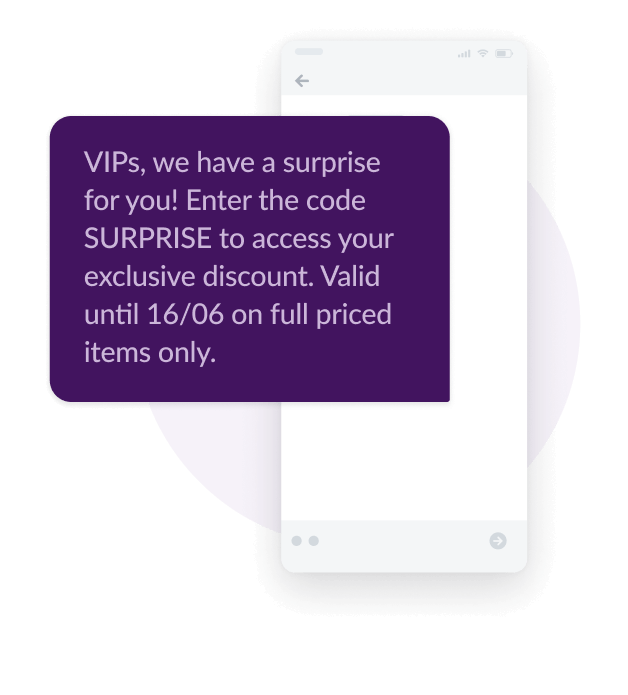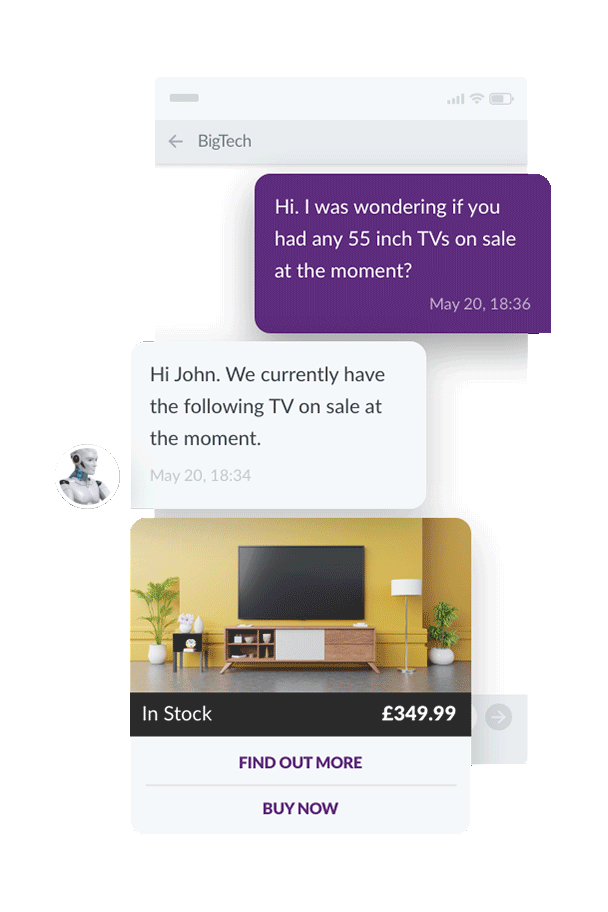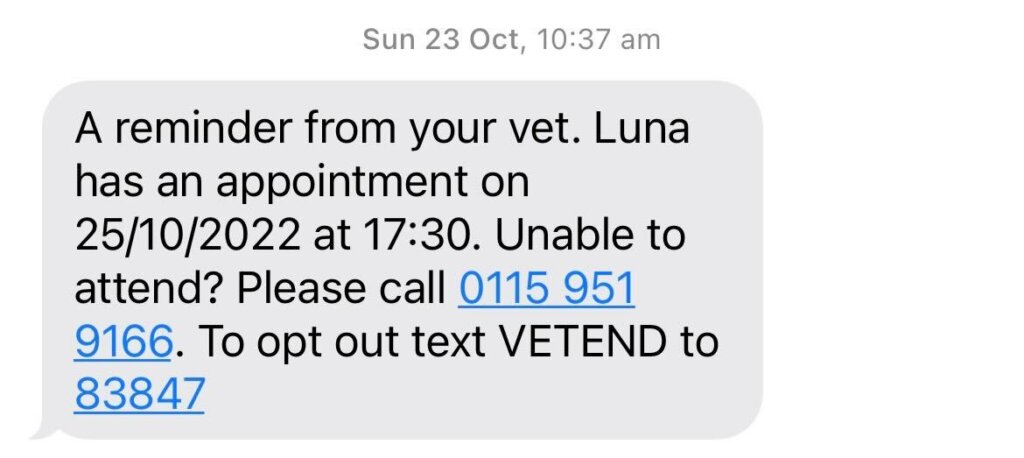Discover how businesses are using two-way SMS to improve customer engagement, boost satisfaction and drive growth.
You’re probably aware of the benefits of SMS for businesses: it’s fast, it’s scalable and it offers unbeatable open and response rates. Two-way SMS goes one better, opening up even more opportunities to engage and connect with customers and teams.
In this article, we look at the advantages of two-way SMS, how it works and the best ways to use it.
What is two-way SMS?
As the name suggests, two-way SMS allows you to both send and receive texts. It moves communication from being one-sided to conversational, making it a brilliant tool for engaging with customers, providing help or gathering information.
Messages can be sent from a short code or long number via an SMS platform. They’re effective because they’re concise, convenient and offer an option to reply.
What’s the difference between one-way and two-way?
One-way SMS lets your business send messages to your customers or team members. Two-way SMS lets them message you back.
By turning a marketing or customer service message into a conversation, you’re instantly creating a friendlier dynamic. You’re giving the recipient an active role rather than a passive one, and showing them that their needs and opinions matter to you. You’re able to send an appropriate response in seconds, providing more effective support or more targeting marketing.
Example of one-way and two-way communication
One-way texts are good for straightforward messaging that don’t require a response. Think sale alerts, booking confirmations, limited-time offers and delivery updates:

Two-way communication is open ended. It’s great for requesting feedback, prompting and responding to questions, providing customer support and learning more about your customers’ preferences:

It also adds another layer to simple texts like a booking reminder, where you might ask customers to respond with a yes or no to confirm attendance:

What are the benefits of two-way SMS?
Two-way SMS has plenty of advantages, both for businesses and for the customers or teams receiving them.
It’s convenient
Messages reach people on their terms, via the device they’re already using for a big chunk of their day (4.8 hours a day on average). The rapid-fire format and the concise length of the messages themselves makes engagement almost effortless.
It’s fast
Text messages can be sent instantly and are generally opened within three minutes, making them ideal for time-sensitive information or promotions. They also allow for immediate responses.
It gets higher engagement
Texts with two-way functionality are an effective way to improve response rates. By inviting dialogue you’re immediately making messages more personal and engaging.
It’s cost effective
SMS is low cost compared to more traditional communication channels, and especially considering you can expect a 98% average open rate.
It gives you greater insight
The format lends itself perfectly to A/B testing and feedback requests and surveys, delivered at just the right time in the customer journey. It also lets you measure campaign effectiveness in terms of engagement rather than simply clicks and sales.
How does two-way SMS work?
Two-way SMS works like an instant messaging application. When you send a text message, it’s like starting a chat.
Since managing chats and responding to messages individually isn’t feasible for most companies, the back-and-forth communication happens through a two-way SMS API or messaging platform, such as Esendex.
SMS platforms use keywords, offer codes, multiple-choice questions and even natural-language conversation to engage customers. This approach gives you the best of both worlds – it lets you send SMS messages to thousands of people at once, and send automated replies, almost instantly.
For two-way capability, you’ll need either an 11-digit Virtual Mobile Number or a memorable five-digit SMS Short Code.
SMS short codes
Short codes are 5-6 digit phone numbers generally used for mass SMS campaigns like marketing promotions, alerts and TV votes or competitions.
Short codes can be unique to a business, or shared and used by multiple businesses. Or you might use a ‘vanity’ short code – a memorable number that customers associate with your brand.
Virtual mobile numbers
A virtual mobile number (VMN) is an 11-digit number that lets you receive SMS directly back to your SMS account. It’s also known as an SMS long code, SMS reply number or virtual reply number.
Numbers look just like a traditional phone number, so they can feel more personal. Your VMN will be unique to you, so you can use it in your advertising or other offline media.
SMS long codes
SMS long code is another name for virtual mobile number (VMN). These 11-digit numbers feature an area code and resemble a standard phone number.
How to use two-way SMS
So many business communications would be more engaging – and more effective – if they came in the form of a two-way interaction. And the great thing is you learn more about your customers in the process, so you can keep tweaking your messages and promotions to improve targeting.
Here are some examples of how to use two-way messaging to connect with your customers, improve efficiencies and deliver a better experience.
Customer support
Customer support is one area where people really like to receive individual attention, and a two-way exchange can turn a moment of frustration into something much more positive.
Two-way customer service messaging is brilliant for gathering information and addressing people’s specific needs and concerns. It can also alert your help desk so that a personal call or exchange can take place.
Booking appointments
We already know that 83% of consumers would like to receive appointment reminders via text. By turning booking and appointment texts into a two-way interaction, you can also give customers the opportunity to quickly confirm, cancel or reschedule.
This approach keeps no-shows to a minimum and, because it requires the customer to send a response, serves as a more effective reminder.
Feedback
SMS feedback surveys are quick, convenient, and get a great response rate – ideal for obtaining real-time feedback and helping you improve your services. Asking customers how likely they are to recommend you to family and friends (your net promoter score) on a scale of 0-10 gives you accurate feedback while taking up very little customer time.
Sales
Another great use case for two-way SMS is sales. If you send a one-way sales message your customer has limited options: they can click through and hopefully buy, they can ignore it, or they can reply to opt out. With a two-way message, customers get a valuable fourth option – they can ask questions or get support before making their final decision.
By better serving those customers who are interested but still holding back, you can significantly improve conversion rates and build loyalty and engagement. For example, you might follow up on abandoned carts with a discount code or offer of help.
You can also use texts to get to know new subscribers and send them more targeted messages and offers, improving their experience from the outset.
Order updates
You can use two-way order updates to improve efficiency and reduce friction in the delivery stage. Rather than just telling customers their order is on its way, a two-way communication can give them options, such as requesting an alternative delivery place or time. As well as providing great customer service, this reduces call volumes and means more orders are delivered successfully the first time.
Internal comms
We’ve talked about your customers throughout this post, but all the benefits of two-way SMS apply to internal teams too.
While SMS wasn’t always thought of as a professional channel, that’s quickly changing with the rise of remote work and the growing acceptance of phone use in the workplace. Office workers usually have their phone next to them all day, while those who are mobile often rely on them to communicate with other teams and customers/clients. If you want to communicate with people across a diverse range of roles, and make information engaging and accessible to all, SMS is a great choice.
Is two-way SMS worth it?
While two-way SMS usually costs more than sending one-way messages, it will give you higher engagement and typically contribute to better retention rates and sales. It’s scalable, easy to implement, and lets you build relationships in a way that simple texts can’t do.
You can learn more about our business SMS services here, or get in touch to talk to one of our team.



